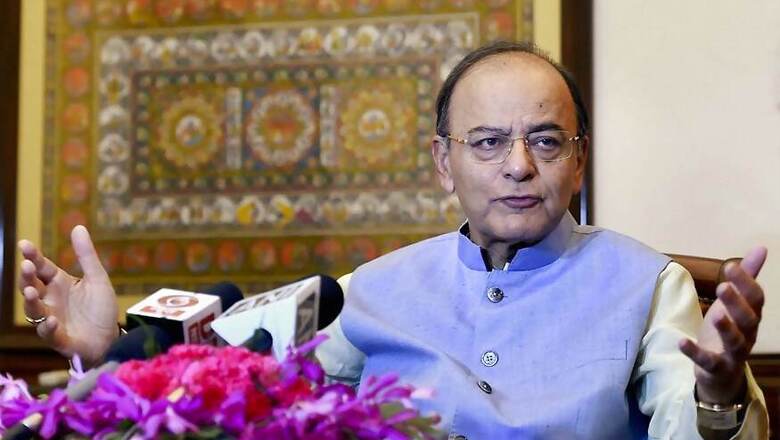
views
Hyderabad: A meeting of the GST Council, headed by Finance Minister Arun Jaitley, got underway in Hyderabad on Saturday morning and was expected to discuss the quantum of cess to be hiked on luxury and mid-size cars, among other issues.
The council is likely to take up fixing of tax anomalies on a number of common use items as well as the quantum of cess to be hiked on luxury and mid-size cars, officials told PTI.
The all-powerful council, comprising state finance ministers, is likely to consider lowering tax rates on over two dozen products, including idli/dosa batter, dried tamarind, custard powder and kitchen gas lighter after anomalies in their fixations were pointed out, officials said.
The council will also formulate a mechanism to deal with businesses that are deregistering their brands to avoid taxes after the rollout of Goods and Services Tax from July 1. The fitment committee has proposed to the GST Council to consider May 15, 2017, as the cut-off date for considering as a registered brand for the purpose of levy of GST, irrespective of whether or not the brand is subsequently deregistered.
Unbranded food items are exempted from GST, whereas branded and packaged food items attract 5 per cent rate. Hence, many businesses are deregistering their brands to avoid the levy.
The Council had in its last meeting on August 5 approved hike in cess on mid, large size cars, SUVs, hybrid and luxury ones to up to 25%, from 15%. An Ordinance to hike the cess rate has been promulgated and the council will now look at the quantum of hike.
Even as auto makers continued to demand deferral in cess hike, the council is likely to go ahead in increasing as it will rectify the anomaly where rates of certain common use items had gone up but luxury cars were costing less under the new regime, PTI reported on Friday.
Car prices had dropped by up to Rs 3 lakh following the implementation of the Goods and Services Tax (GST) from July 1. This cess has been hiked to up to 25 per cent now on certain makes.
Also, a new category has been introduced in the act wherein motor vehicles which have capacity to transport up to 13 persons would attract 25 per cent cess.
The highest pre-GST tax incidence on motor vehicles worked out to about 52-54.72 per cent, to which 2.5 per cent was added on account of Central Sales Tax and octroi.
Against this, post-GST the total tax incidence came to 43 per cent.
Under GST, which replaced over a dozen central and state levies in the biggest tax reform since independence, cars attract the top tax rate of 28 per cent.
On top of this, a cess of 1 to 25 per cent has been levied for the creation of a corpus to compensate states for any loss of revenue from implementation of GST.(With PTI inputs)




















Comments
0 comment